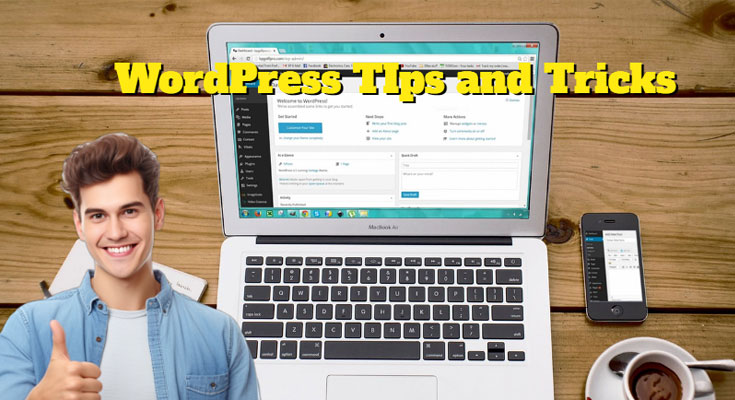In the dynamic world of website development, WordPress continues to reign as one of the most popular and versatile content management systems (CMS). Whether you’re a seasoned developer or just starting your online journey, mastering WordPress can significantly elevate your website’s performance and user experience. In this blog, we’ll delve into a treasure trove of WordPress tips and tricks that can help you unlock its full potential.
1. Harnessing the Power of Themes and Plugins
- Choose a responsive theme: Opt for themes that adapt seamlessly to various devices and screen sizes, ensuring a consistent user experience.
- Keep it minimal: Select a clean and lightweight theme to enhance your website’s loading speed and optimize performance.
- Plugin prowess: Utilize plugins to add functionality without heavy coding. However, be mindful of overloading your site with unnecessary plugins, as they can slow it down.
2. Streamline User Navigation
- Intuitive menus: Create clear and logical menus for easy navigation. Utilize WordPress’s built-in menu system to organize your content effectively.
- Use categories and tags: Organize your posts using categories and tags to help users find relevant content quickly.
- Internal linking: Link relevant articles within your own content to keep users engaged and improve SEO.
3. Optimize Your Content
- Quality over quantity: Focus on creating high-quality, valuable content that resonates with your target audience.
- SEO optimization: Install an SEO plugin to optimize your content for search engines. Pay attention to meta titles, descriptions, and keyword usage.
- Visual appeal: Incorporate images and multimedia to break up text and make your content visually engaging.
4. Speed and Performance
- Image optimization: Compress images before uploading to reduce file sizes without compromising quality. This enhances page load speed.
- Cache plugins: Install a caching plugin to store static versions of your pages, reducing server load and improving loading times.
- Content delivery networks (CDNs): Utilize CDNs to distribute your website’s content across various servers worldwide, further boosting loading speed.
5. Security Measures
- Regular updates: Keep your WordPress core, themes, and plugins up to date to patch security vulnerabilities.
- Strong passwords: Use complex passwords and consider a password manager for enhanced security.
- Two-factor authentication (2FA): Implement 2FA to add an extra layer of protection to your login process.
6. Engage with Your Audience
- Comments section: Encourage user engagement by enabling comments on your blog posts. Reply to comments to foster a sense of community.
- Social media integration: Add social sharing buttons to make it easy for readers to share your content across various platforms.
- Email subscriptions: Allow users to subscribe to your content via email, keeping them informed about your latest updates.
7. Responsive Design
- Mobile optimization: Ensure your website looks and functions well on mobile devices. Use responsive design principles to adapt the layout to different screens.
- Test across devices: Regularly test your website on various devices and browsers to identify and address any compatibility issues.
8. Backup and Restore
- Regular backups: Schedule automatic backups of your website to protect against data loss in case of unexpected events.
- Backup plugins: Explore backup plugins that simplify the process and allow you to restore your website easily.
9. Customization Techniques
- Child themes: When customizing themes, use child themes to retain changes when the parent theme updates.
- Custom CSS: Customize your website’s appearance using custom CSS code without altering the theme’s core files.
10. Analytics and Monitoring
- Google Analytics integration: Track your website’s performance and user behavior using Google Analytics for valuable insights.
- Broken link checker: Use plugins to regularly scan your website for broken links, ensuring a seamless user experience.
11. Accessibility Matters
- Alt text for images: Provide descriptive alt text for images to make your content accessible to visually impaired users and improve SEO.
- Use headings properly: Structure your content using headings (H1, H2, etc.) to improve readability and navigation.
12. Mastering the Editor
- Visual vs. HTML: Familiarize yourself with both the visual and HTML editors to have greater control over your content’s formatting.
- Keyboard shortcuts: Speed up your editing process by learning keyboard shortcuts for common formatting tasks.
13. Regular Maintenance
- Database optimization: Clean up your database by removing unnecessary data to maintain optimal website performance.
- Check broken links: Regularly scan and fix broken links to ensure a smooth user experience.
In conclusion, WordPress offers a vast array of features and possibilities for crafting impressive websites. By implementing these tips and tricks, you can enhance your website’s functionality, security, and user engagement. Whether you’re a blogger, business owner, or developer, these practices will undoubtedly pave the way for a more successful and user-friendly WordPress experience. Happy website building!



